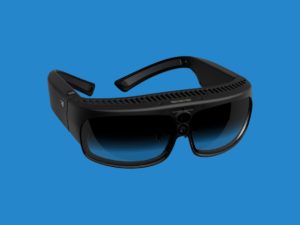WHY IT’S SO HARD TO DESIGN FASHIONABLE AUGMENTED-REALITY GLASSES
 The race to make that first pair of commercially successful augmented reality glasses is on, with companies big and small lurching to become the AR platform you wear all the time. It could be Snapchat, with its second iteration of Spectacles. It could be Toshiba, with its new eyewear aimed at enterprise users, or Google, with a remake of Glass. It could be Vuzix or ODG, Intel or Bose, Realmax or Magic Leap. The list goes on and on.
The race to make that first pair of commercially successful augmented reality glasses is on, with companies big and small lurching to become the AR platform you wear all the time. It could be Snapchat, with its second iteration of Spectacles. It could be Toshiba, with its new eyewear aimed at enterprise users, or Google, with a remake of Glass. It could be Vuzix or ODG, Intel or Bose, Realmax or Magic Leap. The list goes on and on.
Some of these smart glasses come close to taking the power and convenience of a mobile phone and resting it on the bridge of your nose. But none of the current designs will make you look like you're walking bravely into the AR future.
"The battle is between immersive functionality and non-dorky, even cool-looking design."
Nima Shams, VP of Headworn at ODG, says the company's goal is to "design the next mobile computing platform."
On the other end of the spectrum are Intel's Vaunt Glasses, which debuted last month. The glasses have thick black frames and can project phone notifications, directions, and incoming messages onto a tiny display in the periphery.
... The company eschewed a camera, a microphone, a speaker, and other hardware to keep the frames sleek and lightweight. To call them stylish would be generous, but they come close to something you might not be embarrassed to wear in public.
See the full story here: https://www.wired.com/story/why-augmented-reality-glasses-look-so-bad/
Pages
- About Philip Lelyveld
- Mark and Addie Lelyveld Biographies
- Presentations and articles
- Tufts Alumni Bio